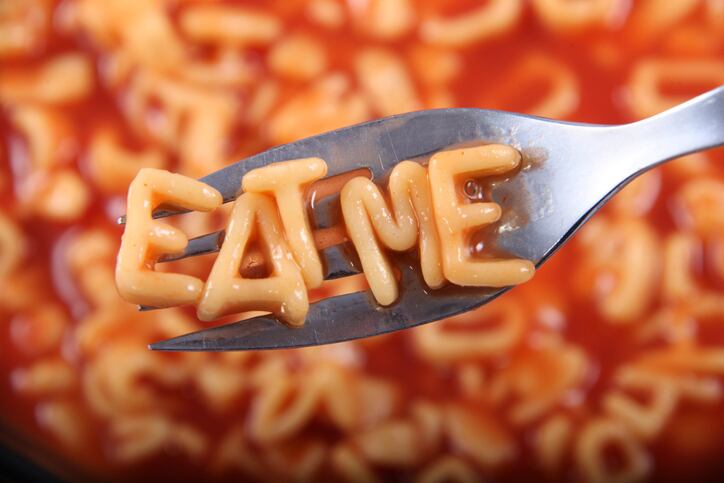One of four tiers in the NOVA food classification system, which groups food according to the extent and purpose of industrial processing, the definition of ‘ultra-processed food’ is loose at best and research shows is constantly shifting, but in general are products that include substances rarely found in the average home kitchen or additives ranging from flavors and colors to anti-foaming and bulking agents designed to enhance the appeal of a product.
Common examples of ultra-processed foods include soda, commercial baked goods, plant-based burgers and chips. But beer, a homemade brownie and steak are not ultra-processed. But neither are they necessarily healthier than their ultra-processed counterparts.
This is where the distinction breaks down as a tool for determining what consumers should eat and avoid to reduce the risk of diet related chronic diseases, argued futurist Amy Webb and former Nutrition Society president Michael Gibney at IFT’s annual summit in Chicago this fall.
And yet emerging research that tracks a correlation between ultra-processed food and higher intake of calories and nutrients of concern (sat fat, sugar, sodium etc) suggests intake of ultra-processed food should be limited, countered Kevin Hall, a nutrition and metabolism scientist at the National Institute of Health and Marion Nestle an author and professor emerita of nutrition and food studies, who both joined Webb and Gibney in a debate co-hosted by Intelligence Squared and IFT about whether we should eat more processed foods.
What is in a name?
The appeal of a four-tiered classification system that could help determine which foods and healthy and helpful to eat and which are not is appealing giving the “massive amount of new data” and change bombarding people daily because it provides a structure that most people crave, acknowledges Webb.
“Labels are what help us create order out of chaos to resolve the messiness,” she said. But, she added, labels also “obscure nuance” and when it comes to nutritional science and the impact of food and beverages on the body nuance is necessary to account for different actions and reactions.
For example, Webb said, a whole grain bread packed with nutrient-dense seeds that is low in fat and high in complex carbohydrates is arguably healthier than a brioche made with white flour that is nutritionally void. Yet, the first is considered ultra-processed and the later is minimally processed.
Likewise, ultra-processed low-fat spreads and margarines that are high in fat but low in saturated and trans fat can help lower blood cholesterol, which is a significant marker for cardiovascular disease, said Gibney.
He noted also noted folic acid is considered an ultra-processed additive, but its addition to the diet during pregnancy can significantly reduce the risk of spina bifida.
‘Something about these ultra-processed foods … caused people to overeat’
Without dismissing the benefits of some ultra-processed foods as a way to boost consumption of short-fall nutrients, like fiber, research conducted by Hall found when people followed an ultra-processed diet they consumed upwards of 500 calories per day more than when they followed a diet free from ulta-processed foods but controlled for the same amount of fat, fiber, sugar, salt and carbs.
“We don’t know what the mechanism of that is. And as a scientist, I’m happy to be proven wrong. But the science showed that there was something about these ultra-processed foods that caused people to overeat and gain weight,” said Hall, who advocated for limiting consumption of ultra-processed foods until researchers could get to the bottom of their correlation with weight gain and other diet related illnesses.
“Evidence that these foods encourage people to eat more than they should” suggests that ultra-processed foods pose a “national problem of public health importance with three-quarters of American adults overweight by CDC standards,” argued Nestle. “We really need to look at this as an enormous problem for our society, and if eating fewer processed foods is a way to approach that, I think we ought to look at that really seriously.”
‘We have to broaden this conversation to make it more nuanced’
While Webb agreed the obesity epidemic in the US is cause for concern, she disagreed with scapegoating ultra-processed foods.
“The way that the contours of this debate are pushing into obesity and addiction” suggests “we have to broaden this conversation to make it more nuanced and we cannot hang our opposition to ultra-processed foods on margarine, on a few things that have been proven to be bad for us over time.”
Rather, she said, “there is a wealth of data and evidence supporting the fact that ultra-processed foods, in the right circumstances and conditions are actually quite good for us. They’re good for local economies. They’re good for our bodies.”
To further reinforce her point, Webb noted that many medically tailored meals that are prescribed by health care providers would qualify as ultra-processed and would have positive health outcomes for consumers.
In addition, Gibney noted many ultra-processed foods that are healthy could also hold the key to addressing food insecurity as they enhance shelf life and make it easier for products to travel long distances to at-risk communities.
Policy implications
As the debate about ultra-processed food continues it will likely gain importance in the coming years as the US Departments of Agriculture and Health and Human Service has flagged it as a discussion point for the upcoming 2025-2030 Dietary Guidelines.
Depending on how the issue shakes out in the guidelines, it could have far reaching implications for the packaged food industry as these guidelines shape what is served in schools, prisons and many US households.

